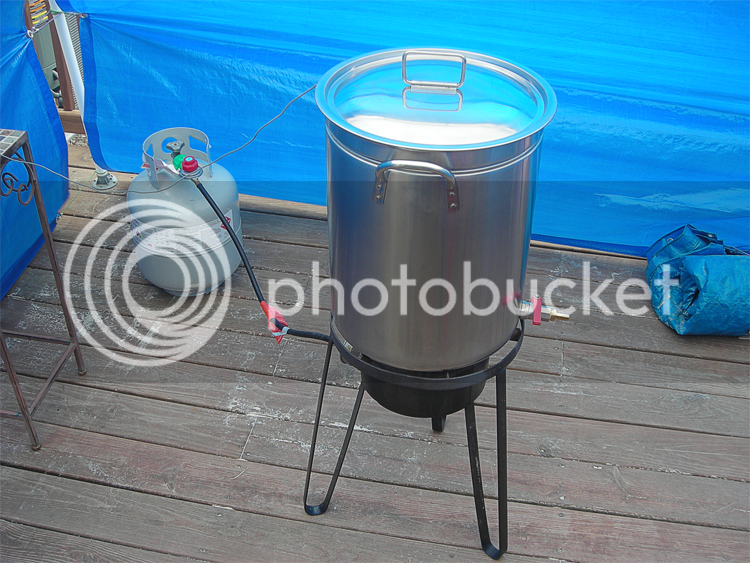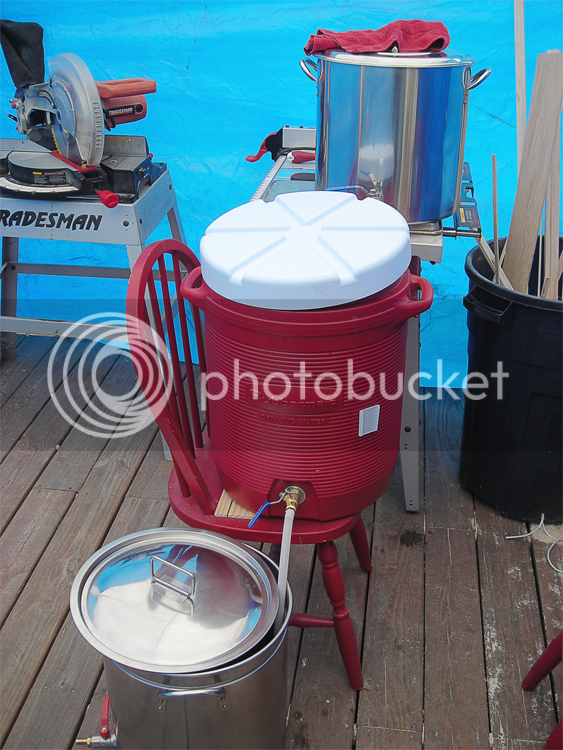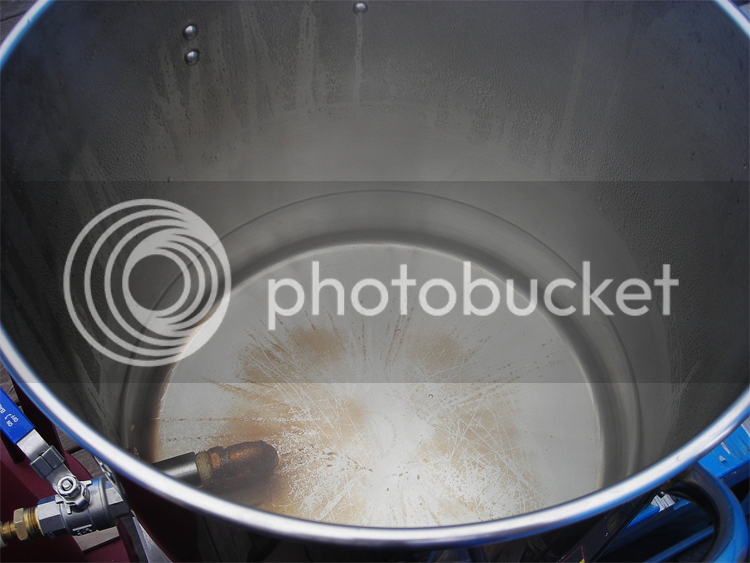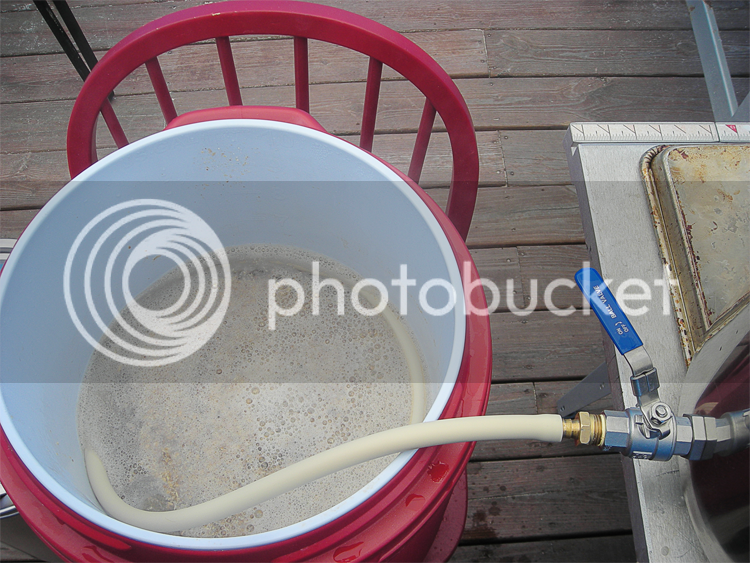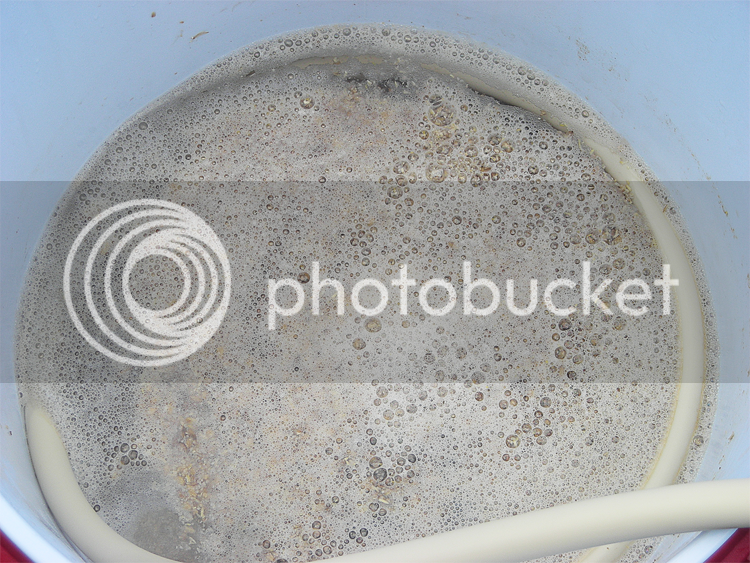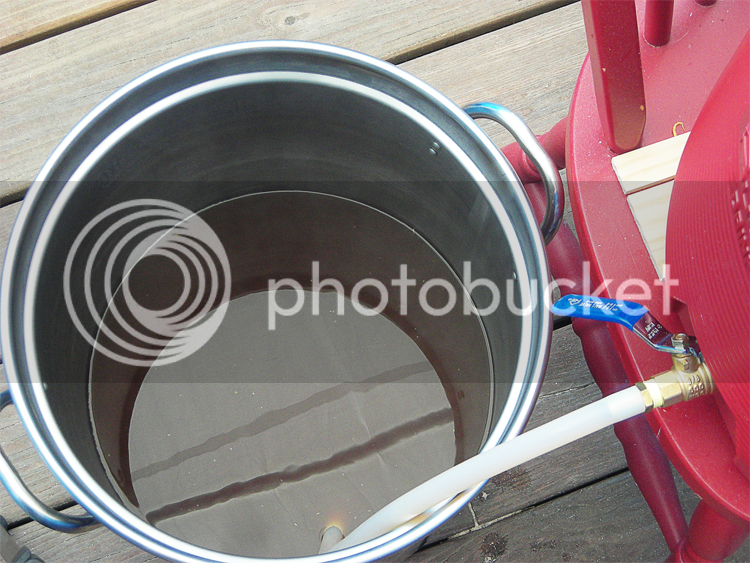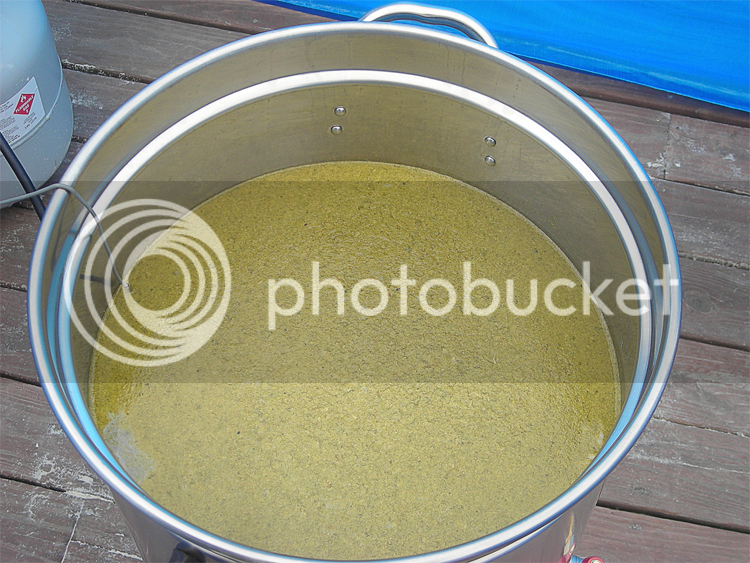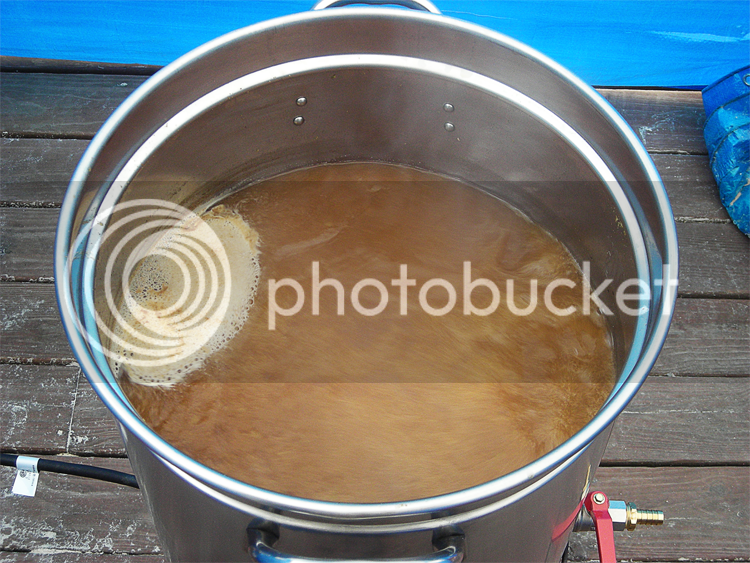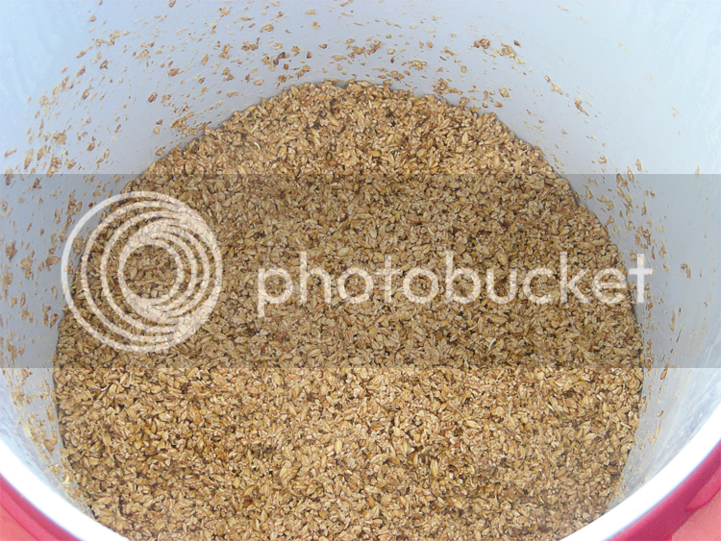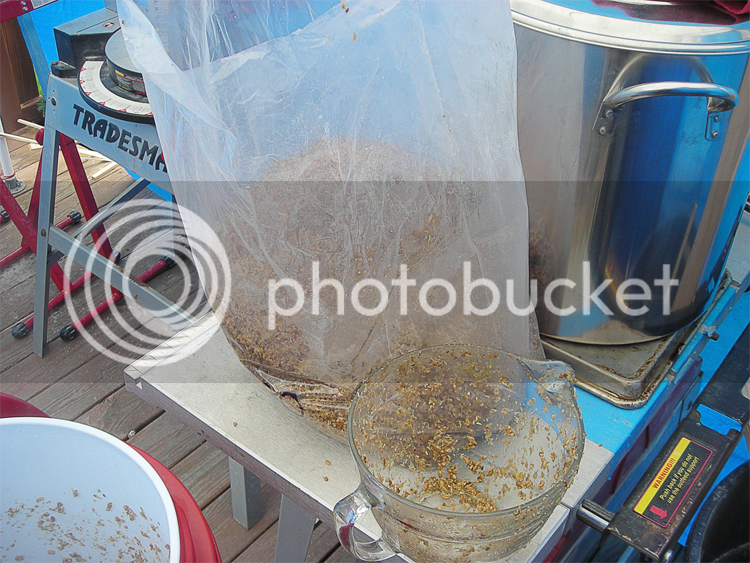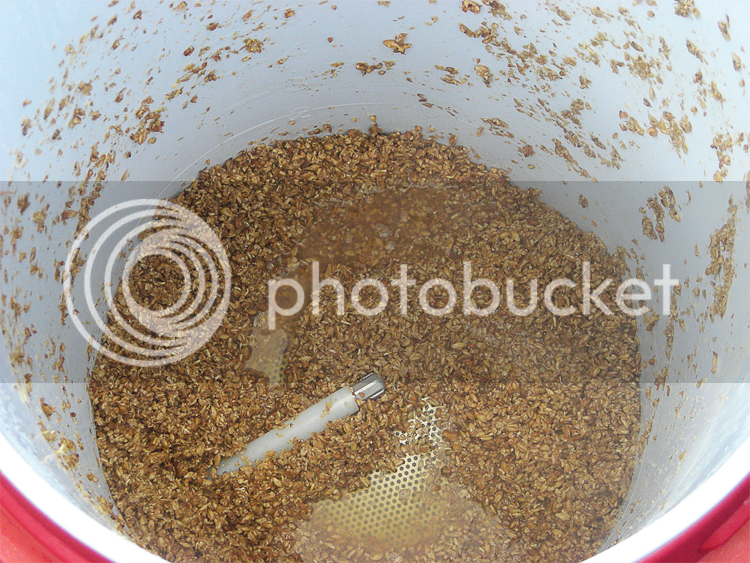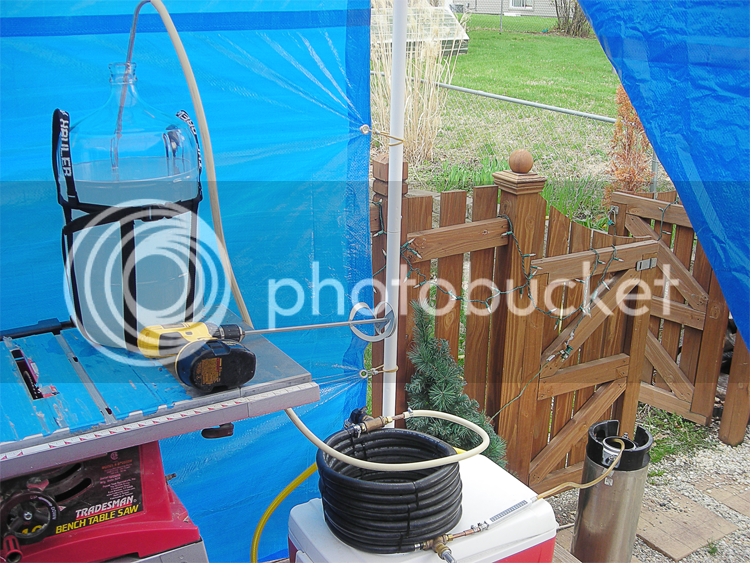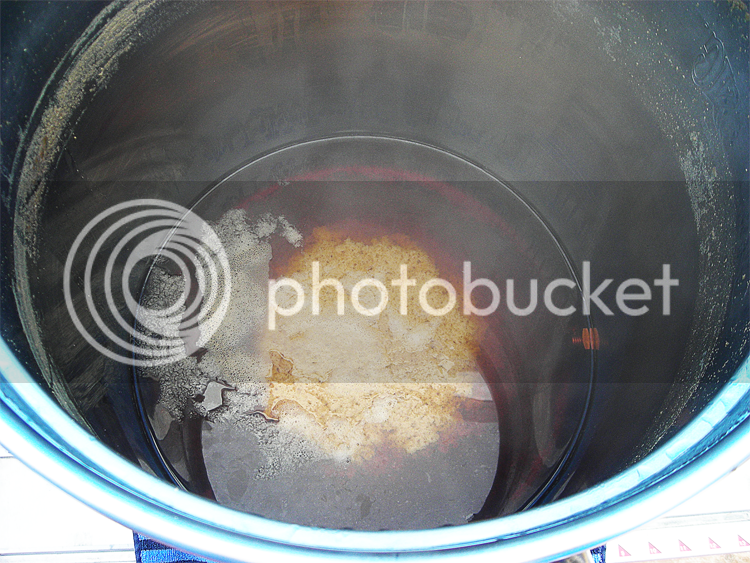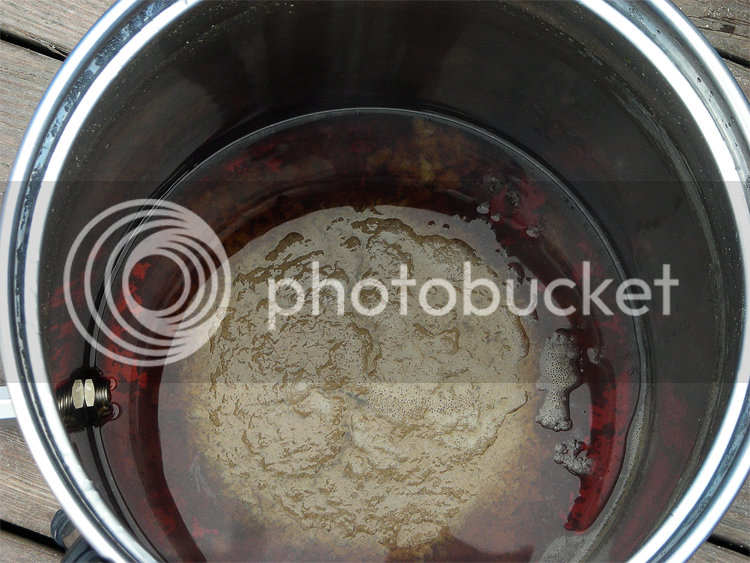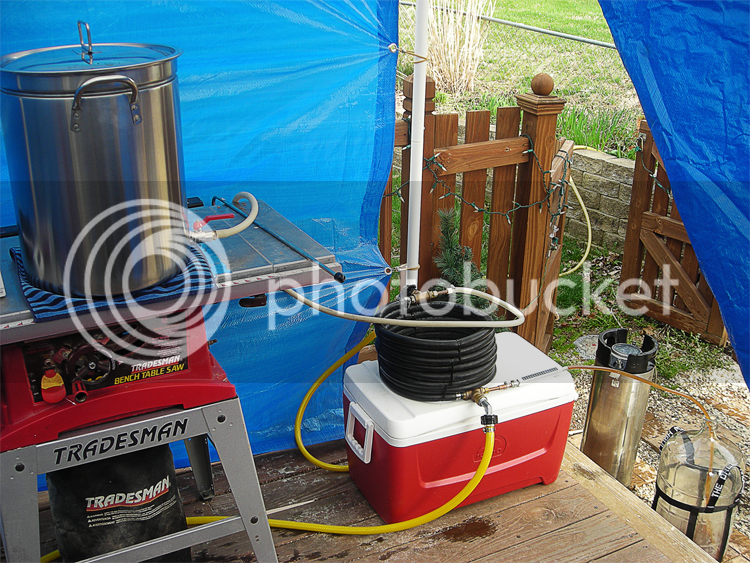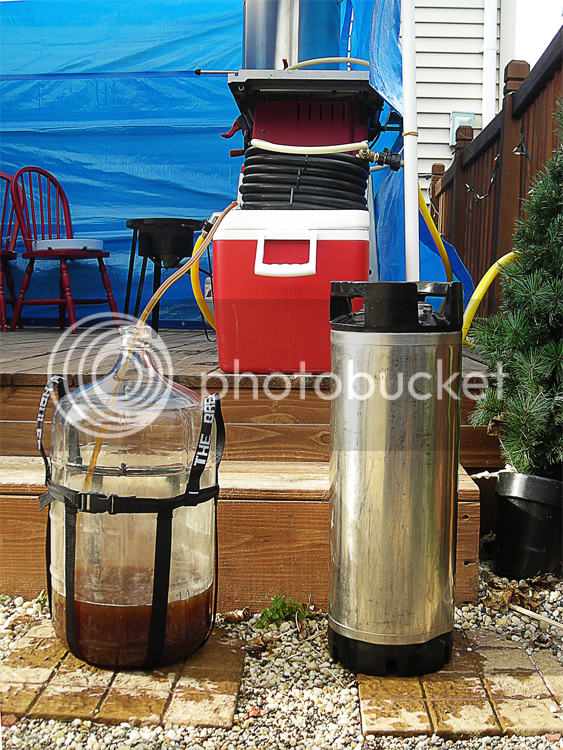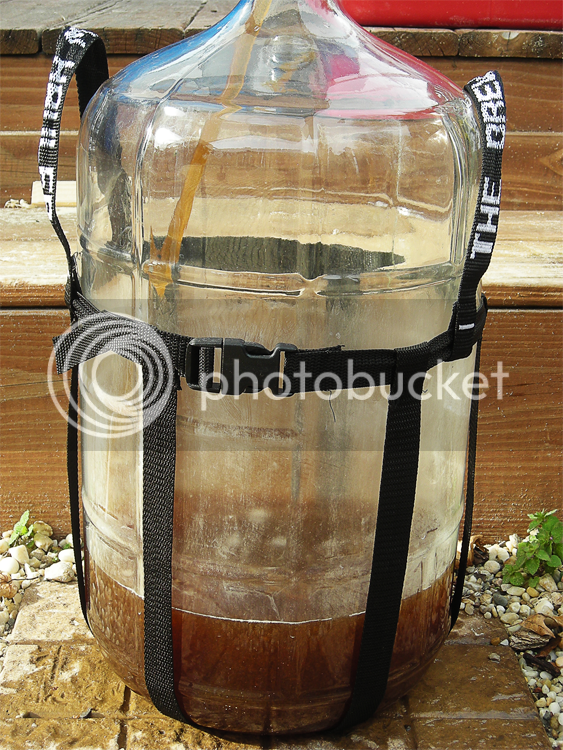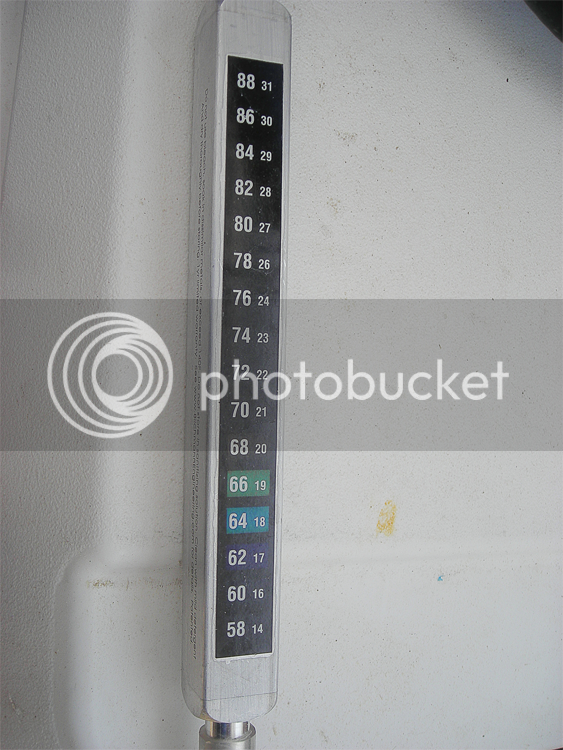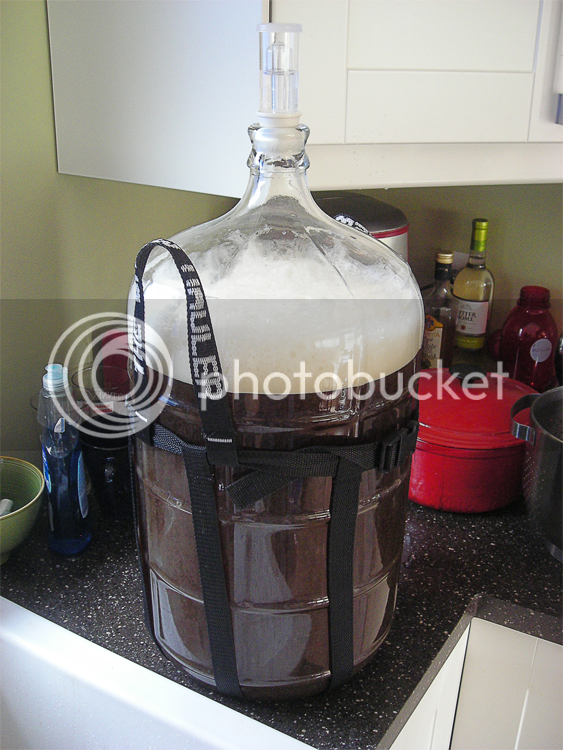headfullahops
Well-Known Member
I know everyone has their own way of doing things and there really are no wrong answers as long as a few basic steps are followed and sanitization isn't an issue. I just figured I'd see what the folks here at HBT have to say about how I brew.
A little background:
1 - This is my third all-grain batch. I have been brewing for three years. A friend of mine got me into extract brewing when we brewed beer for my wedding in '08. I started brewing mini-mash about a year ago and decided to make the switch to all-grain after becoming comfortable with the mash/lauter process.
2 - This is my first batch doing a gravity fly sparge. I didn't have any issues with the flow rates or anything like that. I did come in over my target boil volume by about half a gallon so I extended my boil time to compensate.
3 - The tarped off section on my back deck where I am brewing in the pics is set up like that because I have been doing some woodwork in my house and needed to be able to use my saws in the rain (Michigan in April/May). There is a canopy over the deck but the blue tarps are only a temporary thing.
Let's get this rolling...:rockin:
A little background:
1 - This is my third all-grain batch. I have been brewing for three years. A friend of mine got me into extract brewing when we brewed beer for my wedding in '08. I started brewing mini-mash about a year ago and decided to make the switch to all-grain after becoming comfortable with the mash/lauter process.
2 - This is my first batch doing a gravity fly sparge. I didn't have any issues with the flow rates or anything like that. I did come in over my target boil volume by about half a gallon so I extended my boil time to compensate.
3 - The tarped off section on my back deck where I am brewing in the pics is set up like that because I have been doing some woodwork in my house and needed to be able to use my saws in the rain (Michigan in April/May). There is a canopy over the deck but the blue tarps are only a temporary thing.
Let's get this rolling...:rockin:


